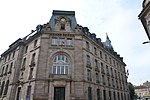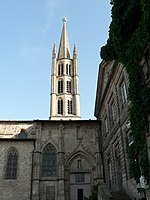Roman Catholic Diocese of Limoges

The Roman Catholic Diocese of Limoges (Latin: Dioecesis Lemovicensis; French: Diocèse de Limoges) is a diocese of the Latin Church of the Roman Catholic Church in France. The diocese comprises the départments of Haute-Vienne and Creuse. After the Concordat of 1801, the See of Limoges lost twenty-four parishes from the district of Nontron which were annexed to the Diocese of Périgueux, and forty-four from the district of Confolens, transferred to the Diocese of Angoulême; but until 1822 it included the entire ancient Diocese of Tulle, when the latter was reorganized. Since 2002, the diocese has been suffragan to the Archdiocese of Poitiers, after transferral from the Archdiocese of Bourges. Until 20 September 2016 the see was held by François Michel Pierre Kalist, who was appointed on 25 Mar 2009. He was promoted to the See of Clermont. Since May 2017, the bishop of Limoges is Pierre-Antoine Bozo.
Excerpt from the Wikipedia article Roman Catholic Diocese of Limoges (License: CC BY-SA 3.0, Authors, Images).Roman Catholic Diocese of Limoges
Rue de la Cathédrale, Limoges Les Portes Ferrées
Geographical coordinates (GPS) Address Nearby Places Show on map
Geographical coordinates (GPS)
| Latitude | Longitude |
|---|---|
| N 45.828055555556 ° | E 1.2647222222222 ° |
Address
Rue de la Cathédrale 3
87000 Limoges, Les Portes Ferrées
Nouvelle-Aquitaine, France
Open on Google Maps










